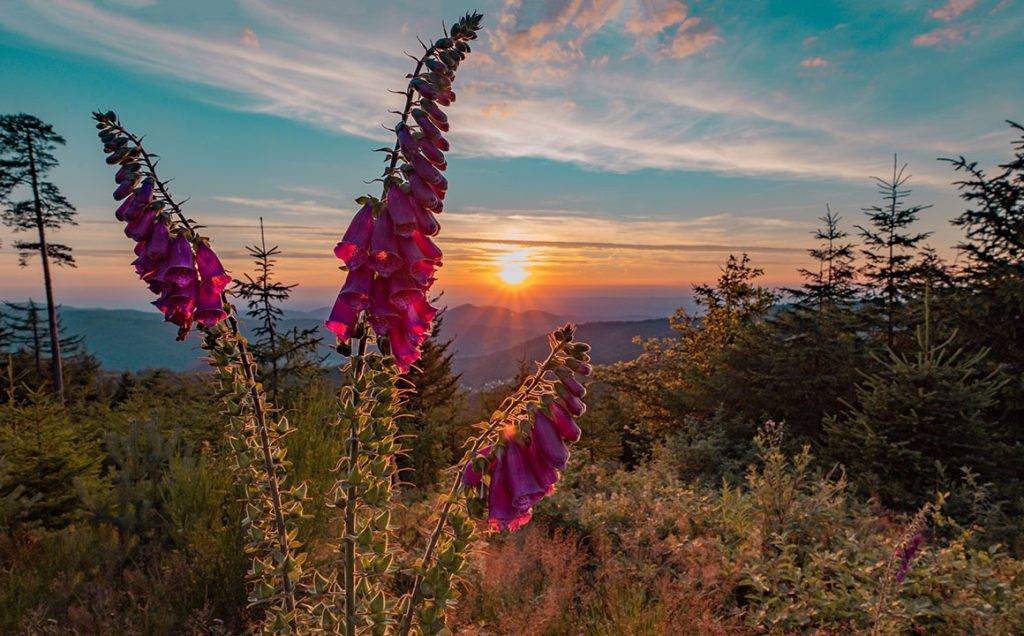You probably know of flowers as the symbol of beauty, love, and joy. However, not all blooms carry the same connotations. Some flowers are a part of eerie legends and dark symbolism, fascinating and even frightening people throughout history. And what better time is there to explore them and learn more about them than right now? So let us introduce you to some bewitching blooms, flowers with eerie legends that hide the darkest secrets.
Belladonna
One of the most notorious members of the dark flower club is Belladonna, also known as deadly nightshade. This striking plant boasts deep purple, bell-shaped flowers that look like something out of a Halloween movie. The reputation of Belladonna stems from its highly toxic berries, which can be deadly if ingested. Throughout history, this plant has been intertwined with tales of witchcraft and sorcery. Legend has it that witches used this plant to craft their secret brews, causing hallucinations and nightmarish visions in those who dared to drink them. That’s why it’s no surprise that this flower became synonymous with danger and mystery.
Oleander
Oleander, in stark contrast to its toxic nature, is a gorgeous plant that’s adorned with clusters of fragrant flowers in various shades. Yet, beneath its seemingly innocent exterior lies a dark secret. Every part of the oleander plant is highly toxic, containing compounds that can cause cardiac arrest if ingested. The legend of oleander is tinged with themes of death, betrayal, and ill omens. In certain cultures, it’s been associated with unfortunate events and forebodings of doom. Its dark symbolism serves as a stark reminder that beauty can often hide deadly secrets.
Foxglove
Foxglove, characterized by its tall spikes of tubular flowers, is both captivating and perplexing. However, that’s not where it ends. The plant also contains potent cardiac glycosides, making it highly toxic if ingested. Its legend is linked to enchanting tales of fairies, as it was believed that the blossoms served as gloves for these supernatural beings. This duality of foxglove – simultaneously gorgeous and deadly – has earned it the nickname “witch’s glove.” The enchanting plant reminds us that appearances can be deceiving, and even the most beautiful things may conceal hidden dangers.
Aconite
Aconite, also known as wolf’s bane or monkshood, is a plant of striking beauty, featuring tall spikes of gorgeous blue or purple flowers. Yet, beneath its charming appearance lies a dark secret: all parts of this plant are highly toxic, containing alkaloids that can cause paralysis and even death. The legend of this plant is intertwined with folklore surrounding werewolves and witches. People were certain that this plant can ward off or even transform individuals into these supernatural creatures. While we’re not sure if this flower could ever turn you into a werewolf, we do know that you should always handle it with precautions.
Hemlock
Hemlock, infamous for its role in the execution of the philosopher Socrates, is a plant with clusters of small white flowers. Its dark reputation is due to its high toxicity; even a small amount of the plant can be lethal if consumed. Hemlock’s legend includes associations with tragic tales of death sentences and poisonings. In Greek mythology, hemlock is said to be the poison that the sorceress Medea used to dispatch her rivals. Its symbolism leans heavily toward death and betrayal, reminding us of the darkness that can lurk in the prettiest places.
YOU MIGHT ALSO LIKE
Low-Maintenance Annuals Even Beginners Can Grow


